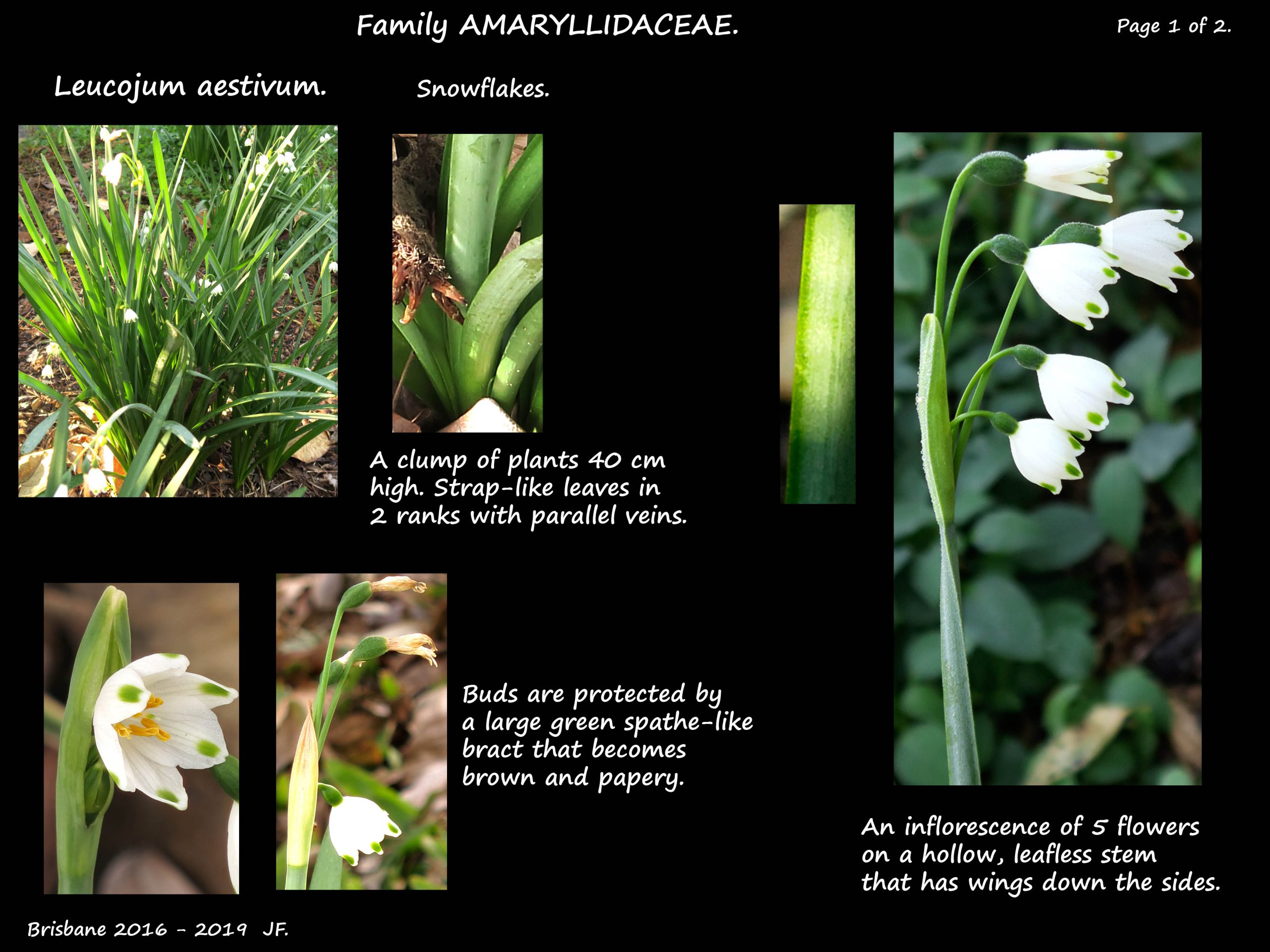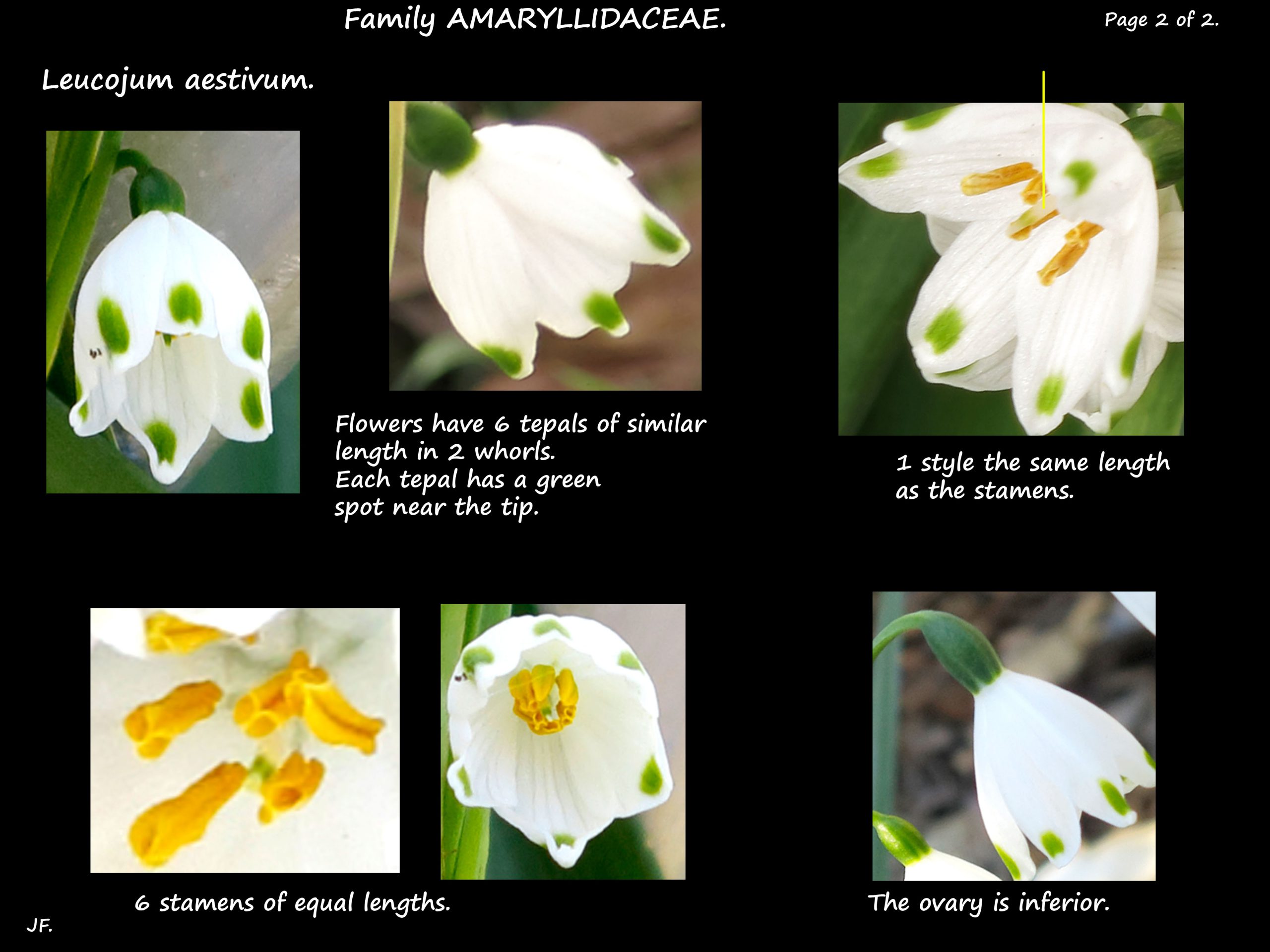Leucojum – Snowflakes.
Commonly known as Snowflake it is in the Subfamily Amaryllidoideae.
The genus has 2 species, Leucojum aestivum and Leucojum vernum, although some
people recognise 2 subspecies of the former.
Leucojum aestivum.
Leucojum aestivum is naturalized in Australia.
The leaves and bulbs are poisonous.
Perennial plants mostly 60 cm or less in height.
The bulbs are about 3 cm long.
Leaves appear well before the flowers.
The strap-like leaves, in 2 ranks, are 5 to 20 mm wide.
Inflorescences stalks are hollow and about the same height as the leaves.
Stalks are leafless and have thin, translucent wings down the sides.
A large, green spathe-like bract protects the buds.
It becomes brown and papery as they open.
The 3 to 5 drooping bell-shaped flowers all arise from the top of the stem.
They are about 1 cm long and on stalks up to 7 cm long.
The perianth has 6 equal sized tepals in 2 whorls.
All the tepals have a green spot near the tip.
The ovary is inferior.
There are 6 stamens with yellow anthers around a single style.
They are all about half the length of the tepals.
In Brisbane they flower in August and September.
Leucojum vernum.
Similar plants but with inflorescences of only 1, or occasionally 2 flowers
and they flower a few weeks earlier.
The spots on the tepals can be green or yellow.
The best known of the cultivars seems to be Leucojum aestivum ‘Gravetye Giant’.
It is taller, up to to 90 cm, and each inflorescence has up to 8 flowers.
The related plants known as Snowdrops are in the genus Galanthus.
These have one drooping flower per stalk and the outer 3 tepals are pure white.
The inner 3 tepals are much shorter and have a green spot.
Acis species that used to be in the Leucojum genus have narrower leaves, solid inflorescence
stalks and no spots on the tepals which are all the same length.
J.F.



